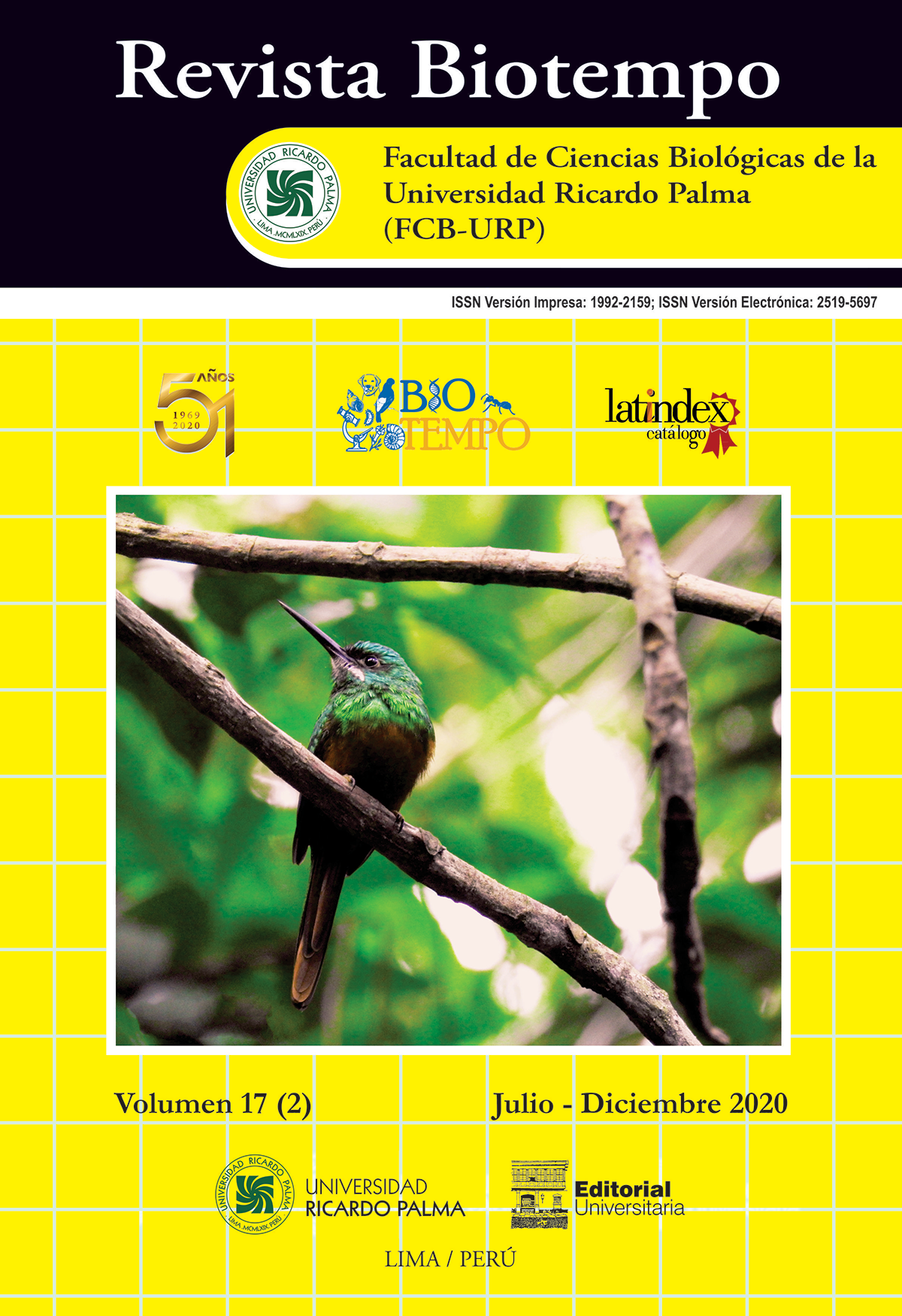DRASTIC DECREASE IN THE GASTEROPODS COMMUNITY IN THE WILDLIFE REFUGE LOS PANTANOS DE VILLA, LIMA, PERU
DOI:
https://doi.org/10.31381/biotempo.v17i2.3319Keywords:
coastal wetlands, freshwater gastropods, Heleobia cumingii, Melanoides tuberculata, Pantanos de VillaAbstract
More than half of freshwater gastropods are in some category of conservation worldwide. Th e objective of this study was to evaluate the drastic decrease in the gastropod community of the Los Pantanos de Villa Wildlife Refuge (RVSPV), Lima, Peru from 2005 to 2010. 8,640 gastropods were collected from eight sampling stations near the “Marvilla” lagoon of the RVSPV. Th e relative abundances by species, families, and study year were obtained. Th e population density of gastropods (ind·m-²) by families was analyzed and also they were grouped between native and exotic species. Th e effect of water quality, established by physicochemical factors, on the density of gastropods according to family and year of study was evaluated. Th e alpha diversity for the gastropod community covered the indices of S (Richness), H' (Shannon- Wiener), D (Simpson), and DMn (Menhinick) per year of study. Th e malacological fauna recorded included eight species of gastropods: Heleobia cumingii (d'Orbigny, 1835), Melanoides tuberculata (O.F. Müller, 1774), Pectinidens diaphanus (King, 1832), Physella venustula (Gould, 1847), Mexinauta peruvianus (Gray, 1828), Drepanotrema kermatoides (d'Orbigny, 1835), Helisoma peruvianum (Broderip, 1832), and Planorbella trivolvis (Say, 1817). Heleobia cumingii (2005: 73%; 2010: 57%) and M. tuberculata (2005: 19%; 2010: 37%) presented the highest relative abundances, their densities started at 845.8 and 217.2 ind·m-2 and ended at 9.22 and 6.06 ind·m-2 by 2010, respectively. Th e densities by family and species were diff erent between the years of study, with a strong tendency to decrease. No live specimens of P. diaphanus, P. venustula, and H. peruvianum were found for 2010. Th e reduction in the gastropod community in the studied period implies that freshwater gastropods represent one of the most threatened and vulnerable taxonomic groups of RVSPV.










